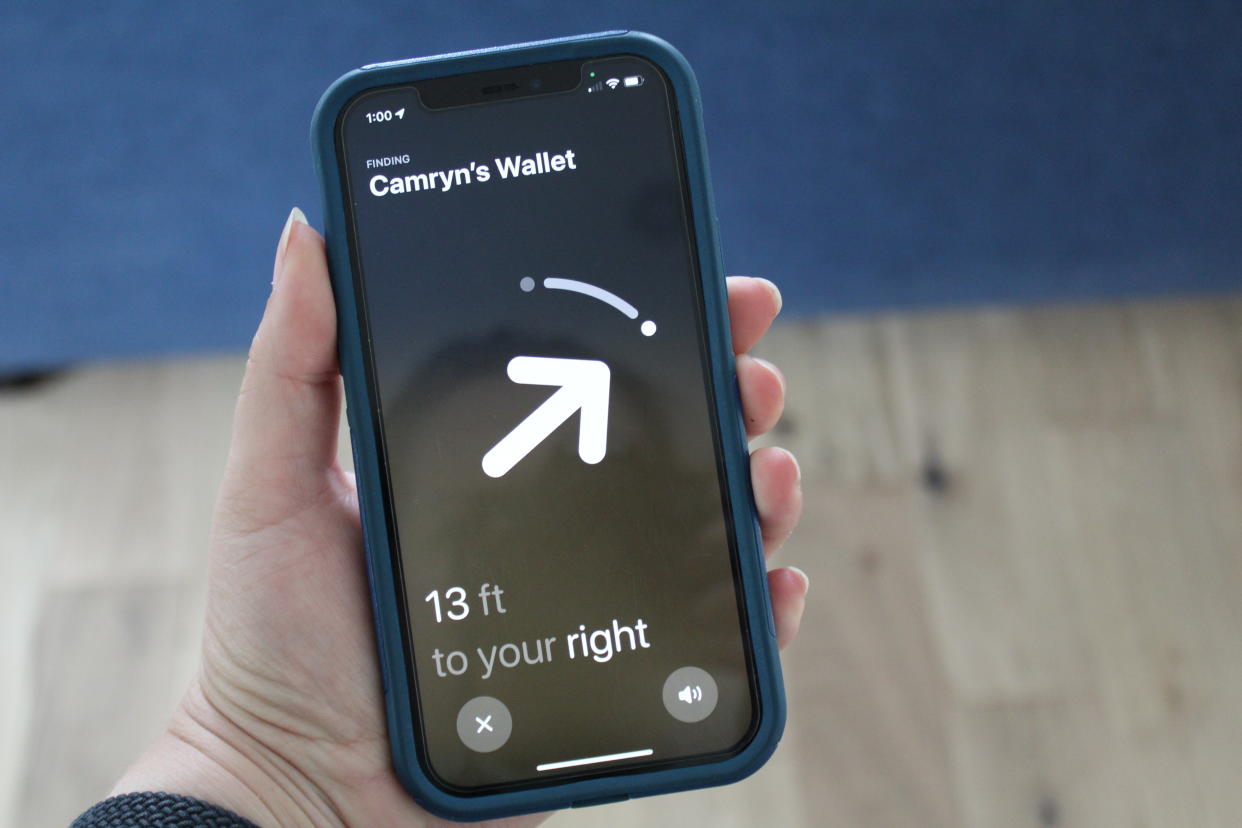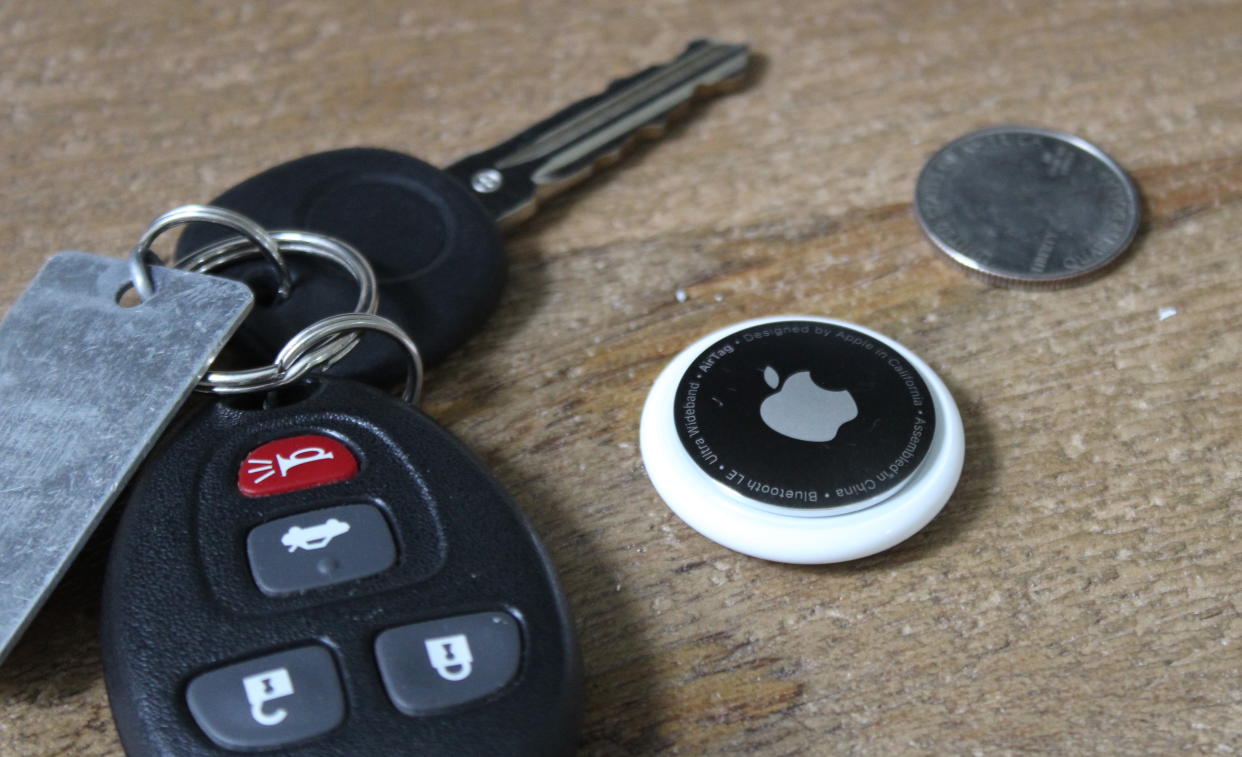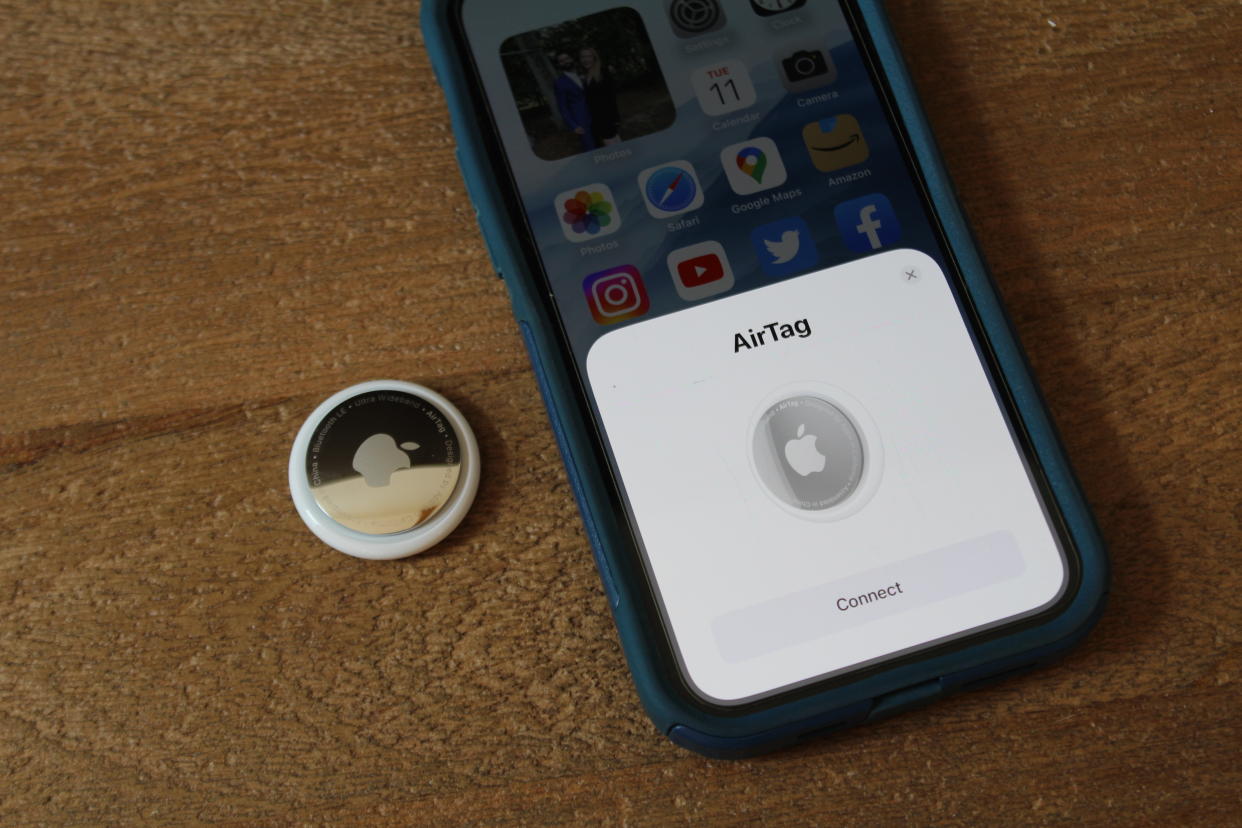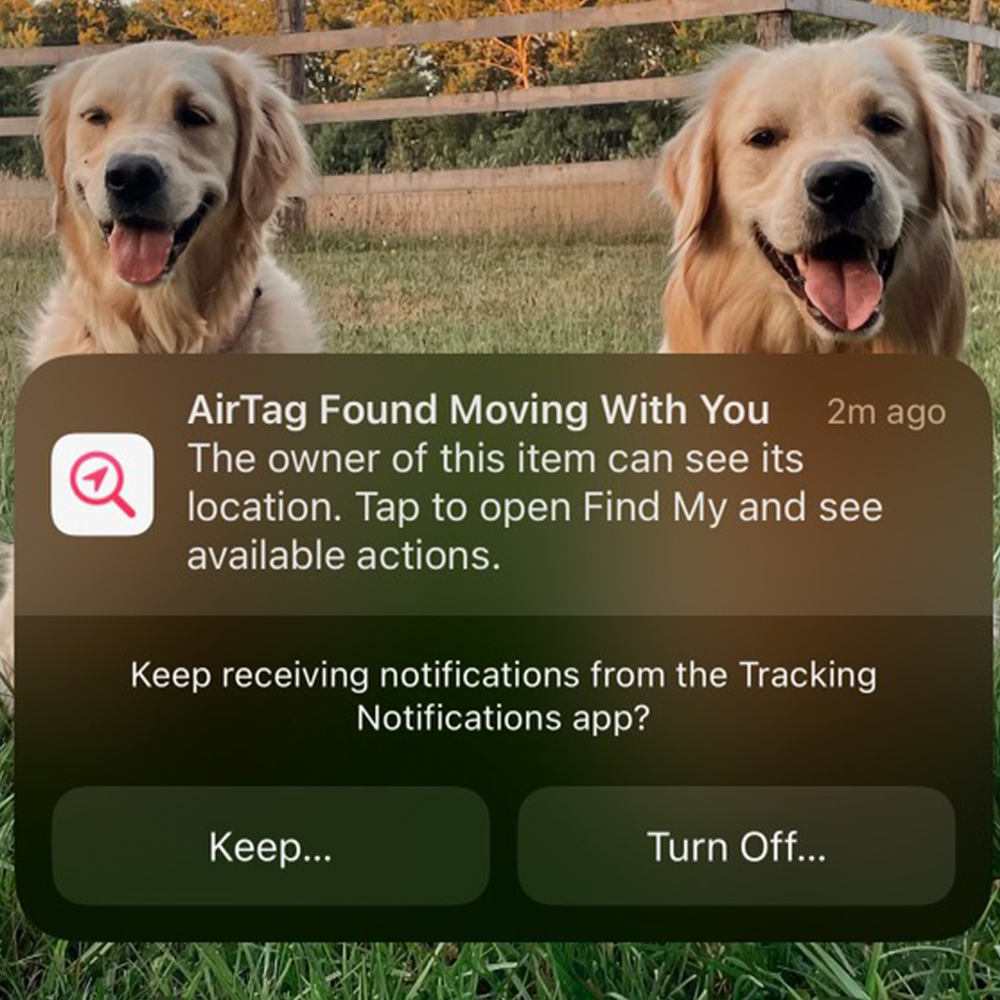Are Apple AirTags actually worth it?
Select independently determines what we cover and recommend. When you buy through our links, we may earn a commission. Learn more.
Imagine this: you’re heading out the door for vacation and then your stomach drops. Where are your keys? They’re not where you left them. You spend an extra 20 minutes searching through the laundry, inspecting every pocket and handbag. When you finally find your keys, you’re late for your flight. If this sounds familiar, you might like the Apple AirTag. These compact trackers promise to make it easier to locate often-lost items, whether they’re stuck between the couch cushions or left behind at the local park.
To find out how well AirTags really work, I tried two of them over the course of a week, using the trackers to locate items around my home and even sending them out with other people to test their accuracy. I also spoke with travel experts who use AirTags to find out the benefits (and limitations) of the technology.
Apple AirTags
AirTags are not just useful for finding your keys, either. They have quickly become essential for many travelers, helping people to keep tabs on their suitcases, passports, and other important belongings. The trackers work anywhere — so long as there are iPhone users around, that is — and they don’t require any subscription fee, unlike many GPS trackers.
Apple AirTag

How the AirTag works

To pinpoint the location of your belongings, AirTags send out a Bluetooth signal that can be detected by your phone, as well as nearby Apple devices that use the “Find My” network. When you’re near the tracker, you can use its Precision Finding feature, which guides you toward your missing stuff. When it’s outside the Bluetooth range of your phone, your AirTag pings off other people’s iPhones and sends location data back to you. For this reason, the trackers provide the most accurate data in crowded locations. They don’t provide much help for Android users.
While many people use AirTags to keep track of everyday items like their keys or wallet, these gadgets are also useful when traveling. “AirTags are an affordable, easy and lightweight way to track your bags in the event they get lost or rediverted,” says Pamela Holt, travel expert and host of "Me, Myself & The World: The Art of Solo Travel." “I usually purchase several so I can include one in each checked bag and in my passport holder and wallet for peace of mind.”
The Precision Finding feature also comes in handy when you’re on the road. It can help you find your keys or passport quickly in a messy hotel room, assuaging any worries that you may have lost them, and Holt says it’s useful in the airport, as well: “This nifty feature helps take the stress out of baggage claim, as it can help determine whether your bag has arrived safely and is still on the premises.”
Is it worth it?
To get a sense of how AirTags work in daily life, I tried a few of them. In addition to using them around my home, I also enlisted the help of my partner and father to see how accurate the trackers were when they’re out in the world.
Design

Each AirTag is slightly larger than a quarter, and they have a sleek yet simple design. They are small enough to tuck into a wallet, and you can also purchase keyring holders if you want to hang one off your keys or backpack.
I will say that the trackers are easy to identify, especially if used on small items, which limits their utility if your items are stolen. For instance, if someone takes your passport, chances are they’re going to see the AirTag and know to remove it.
Performance

After I unpackaged the AirTags, it took seconds to pair them with my iPhone. All I had to do was pull out the plastic tab from the tracker and place it next to my phone. I was prompted to set up the device, assigning it a name and emoji for easy identification. I set up two different trackers, and I could see them both in the Find My app under the “Items” tab.
When the AirTags were in my house, I was able to use the Precision Finding feature to locate them. I needed to be within roughly 20 feet of the tag for this feature to work, and it pointed me in the direction of the tracker, making my phone vibrate when I was headed toward it. There’s also a button that makes the tracker beep, which is handy if it’s in a bag or purse.
I also wanted to see how the trackers performed when they were out of range of my phone, so I asked my partner, Nate, and my father to each take one with them to work one day. Nate took his golfing in the morning, then to his job in the city, while my father took the other AirTag out into the woods while he was doing fieldwork. (Note that they both agreed to do this for the sake of this review — it’s illegal to track someone without their consent.)
Nate’s tracker was able to provide accurate location data throughout the day. The Find My app listed the address of the golf course he was on and, later, his office. The tracker generally provided an updated location every few minutes, likely because there were plenty of people around for it to ping off. It didn’t update quite as frequently when he was driving, but I could still see roughly where he was traveling.
As expected, the AirTag didn’t perform as well in remote areas. (After all, if there are no iPhones around, the tracker doesn’t have any way to collect location data.) The AirTag that I gave to my father didn’t update his location for over two hours when he was working on a rural job site. He said there were no people around for miles, and the AirTag’s last known location was when he got out of his car. So if you’re hiking in the wilderness and lose your wallet, your AirTag probably won’t be much help in recovering it.
Privacy

Privacy is a concern with any tracking device, and AirTags offer a variety of security features to address common worries. Apple says that your location data and history aren’t stored on the AirTag itself, and when the trackers are communicating with other iPhones, all information is anonymous and encrypted. In fact, not even Apple knows where your AirTag is at any given time — just you.
There are also safeguards in place to stop other people from tracking you without your knowledge. Within a few hours of carrying my AirTags around, both of my testing assistants had received notifications on their iPhones that they were being followed by an AirTag. Their phones provided them with the AirTag’s serial number, the time when it first appeared and the last four digits of my phone number. There was also an option to disable the AirTag if needed.
Battery life
Another major selling point of AirTags is that they have a long-lasting battery. These trackers are supposed to last for more than a year on a single battery, which means you don’t have to worry about carrying a charger or spare batteries on your travels. When your AirTag battery is running low, it will send an alert to your phone and you can replace the CR2032 coin cell battery inside by twisting off the back cover.
Price
As far as cost goes, it’s hard to beat the AirTag. One tracker costs less than $30, and what’s more, there’s no monthly fee associated with them. If you were to choose a tracker that used GPS, you almost always have to pay a subscription fee to use the network, which can quickly become expensive. For instance, the Tracki GPS Tracker has a relatively low upfront cost, but its subscription fee is $20 per month. This added expense might be worth it if you’re headed to a remote location where there aren’t many people around, as GPS trackers gather location data from satellites — not other iPhones — but if you’ll be in a populated area, an AirTag is a more cost-efficient option.
Apple AirTag vs. Tile
Tile is another popular tracking device that works similarly to the AirTag. Tile offers four tracker styles in different shapes and sizes — the Tile Mate is most similar in shape to an AirTag, while the Tile Slim is a credit card shape to fit in a wallet and the Tile Sticker is a small, button-like sticker. There’s also the Tile Pro, which is larger than the Tile Mate and features a longer range and replaceable battery.
There are a few key differences between AirTags and Tile trackers. AirTags can only be used by Apple phones and tablets, while Tile products are compatible with Android devices as well. Tile uses the same methods to locate its trackers — you can find it via Bluetooth if it’s nearby or through the Tile network of users if it’s farther away. However, these trackers only communicate with phones that have the Tile app installed, whereas AirTags can ping off any iOS device.
Additionally, certain Tile features require a subscription fee. If you want to share the tracker with another user, receive smart alerts or view the tracker’s location history, you’ll need to sign up for the Tile Premium plan, which costs $29.99 per year.
Also, consider these products
If you’re looking for a luggage tracker to use on your next trip, there are a few additional products you may want to consider. We chose these options based on product reviews.
eufy Security SmartTrack Link: This small tracker is very similar to the AirTag, and it even works with the Find My app. It’s only compatible with iOS devices, and it has a QR code on the back that anyone can scan to see your contact information in case they find your belongings.
Samsung Galaxy SmartTag: If you use a Samsung Galaxy phone, the SmartTag is the equivalent of an Airtag. It operates the same way, using Bluetooth to communicate with other Galaxy phones, and you can also use it to control other Samsung smart devices in your home—for instance, to turn on the lights when you get home at night.
Tracki GPS Tracker: This is a true GPS tracker that offers international coverage. If you want to carry a tracker while hiking or exploring the wilderness, the Tracki will ensure someone always knows where you are. However, it does have a monthly subscription fee, and the battery only lasts for a few days when it’s in live tracking mode.
Why Trust Select
Camryn Rabideau has been covering product reviews for more than six years for top publications. While researching this article, she spoke with travel experts and tried the product for over a week.
Catch up on Select’s in-depth coverage of personal finance, tech and tools, wellness and more, and follow us on Facebook, Instagram, Twitter and TikTok to stay up to date.
